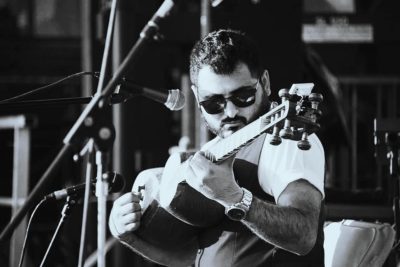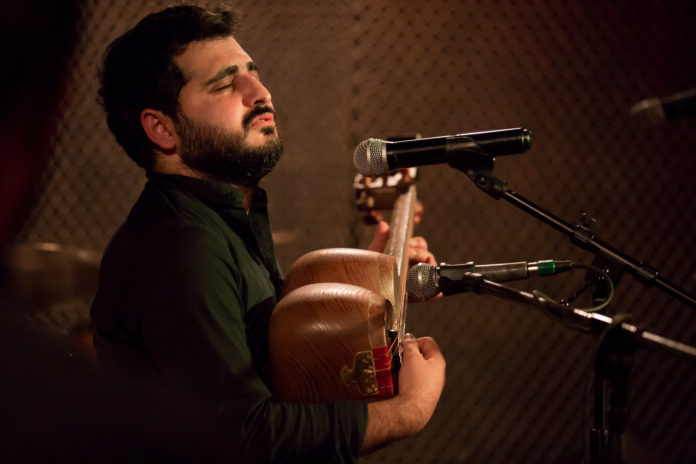By Harry Kezelian
Special to the Mirror-Spectator
DETROIT and YEREVAN — MVF Band has just released a music video of the classic Makhmur Aghjik dedicated to the song’s creators, Silva Kaputikyan and Khachatur Avetisyan, and filmed at poetess Kaputikyan’s House-Museum.

As the movement of Modern Armenian Folk Music has continued to grow over the past few years, much of it has been taking place in the Diaspora (see this review of two albums in the Mirror-Spectator). However, as we have recognized, one of the leaders of the movement was Arto Tuncboyaciyan and the Armenian Navy Band based in Armenia itself — when they first started, they were calling it “avant-garde folk.” More recently coming out of Armenia, we are hearing the talented young singer, composer, and tar-player, Miqayel Voskanyan. He has become one of the powerful new voices in this field and has been growing in popularity in Armenia as well as the Diaspora and international circles.

Voskanyan is a talented singer with a smooth vocal style that falls somewhere between Armenian folklore and current Western pop. His latest production of the song Makhmur Aghjik is accompanied by a high quality music video, with no actors, performers or singers, nor images of Voskanyan himself, but simply the recording of the song accompanied by footage exploring the Silva Kaputikyan House-Museum from end to end. Legendary poetess Silva Kaputikyan (perhaps more recognizable to some by the Western Armenian pronunciation Gaboudigian) wrote the lyrics of this classic song, while the music was composed by Soviet-era kanon player, Khachatur Avetisyan, who helped bring the kanon to its current popularity in Eastern Armenia. The music video was dedicated to both artists. The video is deeply stirring, showing us the preserved home and personal life of one of the great Armenian writers of the past 100 years, and ending with a close-up of three photographs of Kaputikyan with other 20th century Armenian icons: Catholicos Vazken I, classical composer Aram Khachaturian, and fellow writer and poet Avedik Isahakian. The video, while deeply patriotic, is a welcome respite from other “patriotic” Armenian music videos of recent years which have featured over-the-top production, ultra-nationalistic imagery, anachronistic costume and music, and pomegranates gratuitously flying through the air. Voskanyan sings with deep Armenian — and human — feeling. The arrangement is jazz-influenced and modern, yet doesn’t take away from the original feeling of the song.
Voskanyan is the leader of the MVF Band (Miqayel Voskanyan and Friends), formed in 2011, which includes David Melkonyan on saxophone, Arman Peshtmaljyan on keys, Gurgen Ghazaryan on bass, and Movses Ghazaryan on drums. Voskanyan is the leader of the band with his vocals and tar playing. The tar, also widely used in the Caucasus, is native to Persia and historically has had roughly the same place in Eastern Armenian musical culture as the oud has had in that of Western Armenia. Throughout the 19th and early 20th century, ashoughs (troubadours) of large cities and amateur musicians of small villages played the tar and sang for the enjoyment of the people; it was one of the most popular and versatile instruments used in Eastern Armenia before the Soviet Era.









